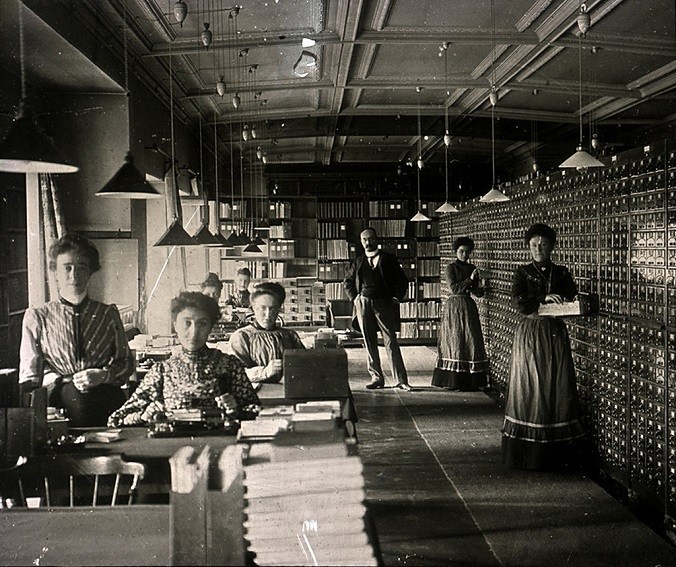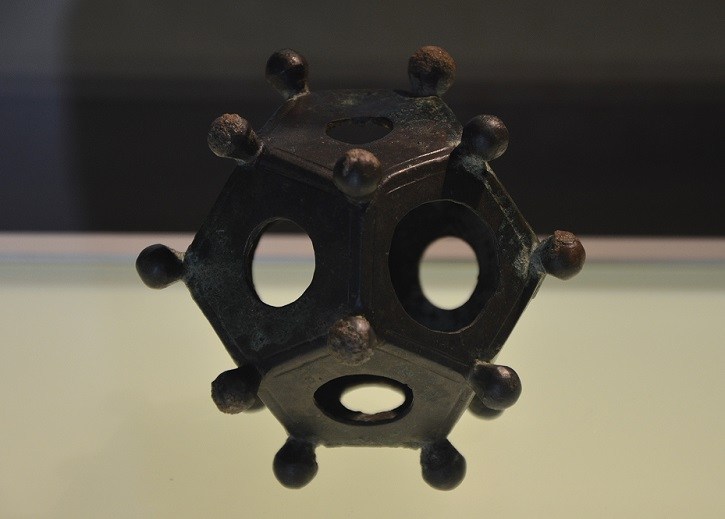Best-selling author Derek Blyth takes you to some places you might never have heard about, in a country almost no one knows.
The world’s oldest internet - MUNDANEUM
Belgium has many strange collections, but the Mundaneum is maybe the oddest. Located in an abandoned department store in the southern Belgian town of Mons, it contains a vast collection of newspapers, index cards, posters, tickets, catalogues and curiosities of all sorts.
The collection was begun in the early twentieth century by the lawyers Paul Otlet and Henri La Fontaine. Henri Fontaine was an obsessive pacifist who won the Nobel Peace Prize, while Otlet was a utopian visionary who proposed a world capital based in Tervuren and lived in an Art Nouveau house in Ixelles.
Their aim was nothing less than to gather together all the world’s knowledge in a single collection. As well as filling several buildings with anything he could find, Otlet invented the library index card to impose order. He also tried to develop a special “electronic telescope” so people could access documents remotely.
Established in 1910, the Mundaneum struggled to find a permanent home. The project was halted during the First World War, but Otlet pushed ahead in the 1920s, convinced that access to knowledge could secure world peace.
In the 1930s, the Mundaneum ran into financial problems. Otlet tried to interest the United States in supporting the collection, and when that failed he approached Hitler. The situation deteriorated after the war and the vast collection of documents ended up dumped in an underground car park on Place Rogier.
The Mundaneum was almost destroyed, but in 1998 the mayor of Mons, Elio di Rupo, stepped in to save it. The collection (or what had survived) was rehoused in a former department store in Mons and, with funding from Google in 2012, rebranded as the world’s first internet.
wThe impressive main hall is filled with rows of old wooden filing cabinets along with photographs, plans and letters. Other rooms are devoted to temporary exhibitions on themes linked to feminism, socialism and world peace. But most of the collection of 12 million index cards and documents lies hidden in the basement. It is all that remains of a tragic plan to create an internet of paper.
www.mundaneum.org
A walk on the wild side - THE BLACK LOOP
This is no ordinary hike. La Boucle Noire, or Black Loop, takes you on a 20-kilometre trail through the industrial wasteland around Charleroi. You might wonder why anyone would be so mad as to take a hike along empty towpaths and up old spoil heaps. But this wild ramble is a fascinating way to discover Belgium’s industrial heritage.
The Boucle Noire was created by two 1980s indie rock musicians, Micheline Dufert and Francis Pourcel, who played in the bands Kosmose and SIC. They hit on a plan to create a route through the post-industrial wasteland that would add a loop to the long-distance hiking trail GR 412. It’s the perfect way to discover the roots of the Belgian industrial revolution.
Beginning at Charleroi Sud station, the urban explorers have marked out a trail through an unexpected landscape of rusting factories, junk yards and an abandoned railway tunnel. And if 20 kilometres seems a bit too ambitious, you can just do the four-kilometre industrial stretch between Charleroi Sud and Marchienne-au-Pont, then take the metro back into town.
The two musicians also created an inspiring website with a detailed map and a lively route description. They include notes on bands with links to the industrial sites, and they have even put together a list of 12 tracks to play on different sections of the route.
The playlist introduces you to some incredible Charleroi music – including vintage industrial rock by Kosmose and SIC. You can listen to Spagguetta Orghasmmond’s catchy L’amour à Charleroi as you circumvent old coal washing houses, or Melanie De Biasio’s 2016 soundscape Blackened Cities as you hike up an old spoil tip.
www.cheminsdesterrils.be
The world’s most mysterious object - GALLO ROMAN MUSEUM, TONGEREN
The strange metal structure stands on a street corner in the middle of Tongeren. There’s no sign. No explanation anywhere. You have to go to the Gallo-Roman Museum to find out anything about it. But you don’t learn much.
The mysterious 12-sided bronze object known as the dodecahedron was found buried outside Tongeren’s city walls in 1939. It dates from the period when Tongeren was an important Roman city on the route from Cologne to the North Sea. It has twelve surfaces, each with a hole of a different size, along with 20 small balls attached to the corners.
When the Gallo-Roman Museum opened in 1995, the entire basement level was dedicated to “the secret of the dodecahedron”. You entered a dark room that looked like an abandoned lecture theatre where the visitor was challenged to come up with an explanation for the bizarre 12-sided object. “We are hoping that someone will come here one day and discover the answer to the puzzle,” a curator told me at the time.
More than 100 examples have been found in different locations across Europe – in graves, bath houses or former army camps. Many different explanations have been proposed over the years. The dodecahedron might have been part of a game, or perhaps a tool for measuring pipe sizes. Or maybe it was an elaborate candlestick holder, someone has suggested. No one knows. It’s one of the world’s greatest mysteries.
You can try to work out the puzzle yourself while eating lunch in the museum’s revamped restaurant Bistro Bacchus. The menu includes some old Roman recipes. “They offer a taste experience that takes you back 2000 years,” claims food archaeologist Jeroen Van Vaerenbergh.
I ordered Isicia omentata, a dish involving pork meatballs cooked in red wine and seasoned with mulberries, pine nut kernels and lovage (described in the menu as “similar to the aroma of Maggi soup flavouring”). Add a glass of wine, and you could be a second-century Roman.
The world’s longest tram ride - THE COAST TRAM
Most people tell you the same thing. The Belgian coast is ugly. It is just a long line of apartment buildings. The waiters are rude. The wind blows sand in your face. It rains every day. And so it goes on. But take a ride on the coast tram and you might see things differently.
The 67-kilometre coast route is the longest tram ride in the world and costs just a few euro for a day ticket. You can cover the entire route from De Panne to Knokke in a couple of hours, but it is a lot more fun to get off at different stops along the way. You can wander among the fish shops in Nieuwpoort, drink a coffee in Ostend’s grand café Du Parc, and walk out to the end of the pier in Blankenberge.
Along the way, you glimpse a restaurant built in 1935 in the style of a transatlantic liner, the remains of Hitler’s Atlantic Wall defences, and the massive docks at Zeebrugge. Most of the time, the sea is hidden behind apartment buildings, but there a beautiful stretch along the water just south of Ostend.
www.delijn.be
The rooftop racing track - IMPERIA CAR FACTORY, NESSONVAUX
You can drive through the little town of Nessonvaux in the valley of the Vesdre without ever noticing the abandoned Impéria car factory. It opened in 1907 when car manufacturing was still a new industry. The owner Adrien Piedboeuf worked here with the German engineer Henri Pieper (who invented one of the world’s first hybrid cars, lodging a patent in the United States in 1909, almost 90 years before the Toyota Prius rolled off the production line).
The factory originally tested its cars on the winding local roads, but people started to complain about the danger. Piedboeuf came up with the original idea of building a one-kilometre test track on the factory roof, several years before the famous rooftop track on the Fiat factory in Turin. By 1910, the Impéria factory had produced a model that reached a speed of 144 km/h on an English race track.
The factory finally closed in 1958. Now there are just 34 Impéria cars left in the world, including four models in a small museum a few kilometres down the road in the village of Fraipont.
The fries shop Frites Impéria in Rue Docteur Heuze has nostalgic photographs on its walls and the Rue Heid Mawet leads to a viewpoint where you can look down on the rooftop race track.
The old factory building in the centre of the village was designed in the style of a mediaeval castle. Abandoned for many years, it is due to be converted into an apartment complex. The plan, announced earlier this year, would preserve a section of the rooftop track where automobile history was made.
Rue Gomélevay 52, Nessonvaux





